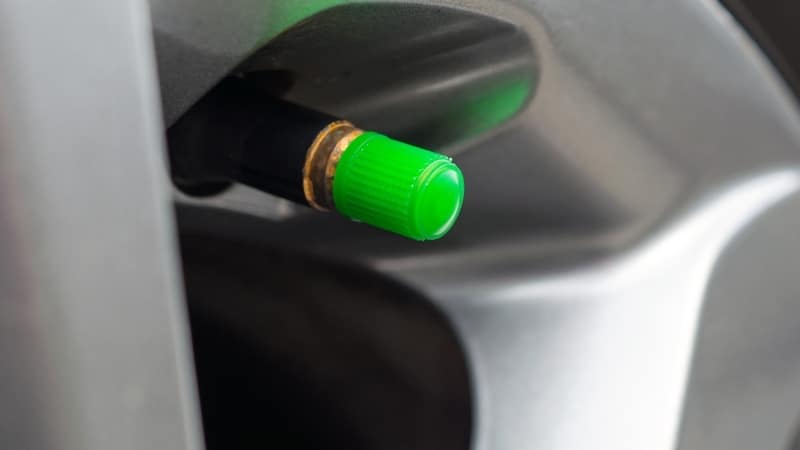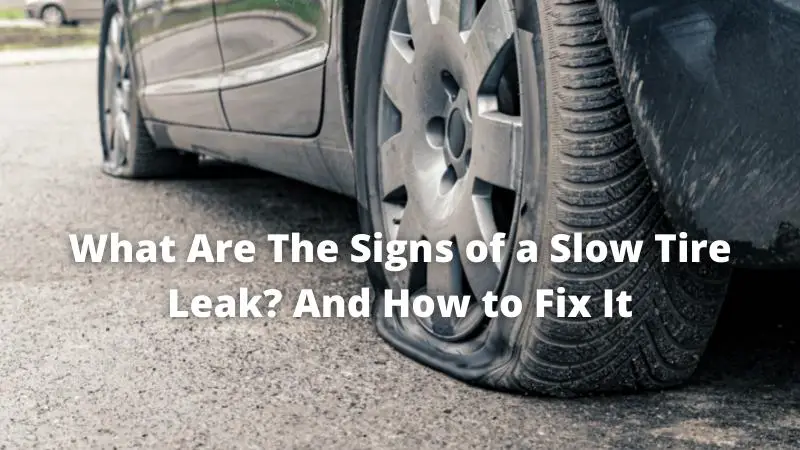Cracks in the sidewalls of tires are readily apparent and may be identified relatively instantly. But the tire issues that are the most difficult to deal with are also the ones that are the most difficult to detect.
For example, in the case of a gradual leak in one or more of their tires, many drivers are unaware of how to avoid, identify, or deal with the situation.
When it comes to the safety and performance of your vehicle, your tires are the point at which the rubber meets the road – very literally. Therefore, if your tire is leaking, you might be putting your safety at risk as a result.
The low tire pressure caused by the leaking tire results in decreased fuel efficiency, as well as the possibility of a blowout. It also impairs your vehicle’s ability to handle correctly, making it more difficult to react to emergency circumstances or drive in adverse weather conditions.
In this article, we will go over the principles of slow tire leaks as well as how to protect yourself and your car if one does occur.
What is a Slow Tire Leak?
Low-pressure tire leaks are exactly what they sound like: microscopic flaws in a tire’s construction that allow air to escape slowly and steadily over a lengthy period. In comparison to regular tire leaks, slow leaks are more difficult to detect, and you may not be able to detect them unless you know what to look for.
Slow leaks, in contrast to other types of tire leaks, seldom result in hissing sounds or dramatic and rapid fluctuations in tire pressure. Slow leaks may manifest themselves anywhere on the tire, making them more difficult to detect and identify. Your tire may develop a gradual leak:
- In the vicinity of the valve
- In the bead of the tire (where the tire touches the wheel)
- In the tread
- On the sidewall
- On the valve stem
While slow leaks are not immediately noticeable, they may be quite dangerous. Slow leaks, like any other kind of leak, ultimately cause the tire’s air pressure to drop to dangerously low levels, which may be fatal. If this fall in tire pressure happens while you are driving, the tires will create far more heat than they would otherwise produce.
This excessive heat and friction may cause the rubber to wear through suddenly, resulting in a blowout. This is a danger that is especially prevalent while traveling at highway speeds.
What Are The Signs of a Slow Tire Leak?
Your tires’ performance will be essential in establishing whether or not you have a steady leak. You may have a slow leak if you see any of the following:
- You may have frequent flats after having one or more of your tires replaced.
- When your car has been parked for a lengthy period, the tire pressure drops.
- Low tire pressure in one tire when the other tires are adequately filled
Any of these would be clear indicators that your tire is slowly leaking. If you want to be sure by making a diagnosis, keep reading to find out how to diagnose a slow tire leak!
What Are The Causes of Slow Tire Leak?

If you are suffering a slow leak, the following are some things to check for:
A Puncture in the Tire
Many people believe that a puncture would cause the tire to fall flat quickly. This is a frequent misperception. However, in many situations, the item that caused the puncture stays trapped in the tire, preventing the air from escaping as rapidly as it might otherwise.
It is critical to not disregard a puncture in the same way that you would any other kind of tire leak.
Eventually, the item will either wear down or work its way out of the tire, depending on the situation. For more information, please see our article How to Repair a Tire with a Safe, Permanent Fix for more information.
Damage to the Wheels
The region where the tire bead meets the rim is another typical source of slow tire leaks, and it is often damaged. It is common for drivers to inflict this sort of damage by striking the curb, traveling over a speed bump at a fast rate of speed, or driving over potholes!
The collision deforms the metal surface of the wheel, which may cause the tire to pull away from the wheel’s mounting surface as a result of the impact.
Valve Stem Damage

Because old valve stems tend to wear down over time, new tires are often sent with new valve stems. Because of usage, dislocation, and exposure to chemicals on the road, such as road salt, older valve stems may get corroded and fail over time. They may corrode and deteriorate.
It is possible that your valve stem has been damaged, resulting in a gradual and continuous leak. This leak might originate from either the valve’s body or the base of the valve, which is where it contacts the tire’s tread.
Damage to The Tire’s Mounting Surface
Corrosion may cause damage to the mounting surface of the wheel, where the bead of the tire is located, over time. This can result in a leak when the tire pulls away from the mounting surface, causing the wheel to fail.
It is also possible to cause damage to the mounting surface if you drive your vehicle into a curb or step bump, or if you drive your car over a pothole. If the metal surface is distorted, a gradual leak may probably develop.
Identifying and Diagnosing a Slow Tire Leak

There are a few different techniques to determine whether you have a gradual tire leak.
TPMS (Tire Pressure Monitoring Sensor)
If your tire pressure monitoring system (TPMS) is illuminated, one of your tires is underinflated. If you inflate them all and the TPMS alarm goes off after just a few days, you likely have a slow leak on your hands.
Pressure Measurements Taken Manually
Even if you have a tire pressure monitoring system, you should physically check your tire pressure once a week or so. If one of your tires seems to be continuously under-inflated, you likely leak to that tire.
The Spray Technique
If you suspect that one of your tires has a slow leak, you may do a basic examination in your driveway or garage to rule it out.
- Simply fill a container with water to test for escaping air.
- After your vehicle has been at rest for at least 30 minutes, do this test.
- Then, wet down the tire with a hose or a bottle of water until it is no longer sticky.
- Pay close attention to the tire’s surface. A leak should be indicated by the existence of bubbles that break through the water where the air is leaving.
It should be noted that this strategy does not apply to all slow leaks. Even though you don’t see any air bubbles when you run a water test, if you see any of the above-mentioned symptoms of a progressive leak, you should get your tires inspected by a specialist.
How to Fix Slow Tire Leak

Once you’ve figured out where the leak is coming from, you can decide if your tire needs to be repaired or whether it’s time to replace it. The location of the leak is crucial in making this selection.
Fixing Leaks in The Tread
When leaks in the tread of the tire are modest and self-contained, they are typically repairable. However, even slight leaks in the tire’s sidewall damage the tire and need its replacement.
Pinholes and tiny punctures in the tread can easily be repaired using a patching kit purchased from a shop. Without the use of extra materials, small holes may be patched using a resin or rubber compound specialized for tire patching.
Fixing Leaks in The Valve Stem
If your valve stems start to leak, you can replace them, but changing air valves requires a lot more ability. If you’re not confident in your ability to replace your air valve stem, you should take your tire to a repair shop or technician.
Fixing Leaks in The Beads
Bead leaks are a bit different, and it’s approximately a 50/50 chance that you’ll be able to repair one yourself or that you’ll need to hire a professional. A bead leak, like other leaks, may be repairable, but it may also be too severe to fix. Here are the steps to take:
- Typically, repairing the bead entails removing the tire from your car and cleaning any rust from the bead and rim. When clearing off the corrosion, try to be as gentle as possible. Although tires are resilient, you don’t want to cause any new micro-abrasions or punctures while you’re working on them.
- Apply bead sealant to the tire’s bead after you’ve cleaned the bead and rim. Bead sealer is a specialty sealant that is used to repair bead leaks. Bead sealer is readily available at most auto parts shops, and it is reasonably priced.
In certain circumstances, though, the rim may need to be changed.
Fixing Wheel Leaks

It’s also possible that a gradual leak in your tire is being caused by the wheel itself, particularly if it’s old or damaged. Expert assessment is usually required to decide if your wheel can be fixed to halt the leak or whether you’ll need to replace it.
Conclusion
Like most auto repairs, catching slow leaks immediately is critical. Leaking tires may cause serious damage to other parts of your automobile, notably its suspension system.
Knowing how to repair a slow leak yourself may save you a lot of money. Keep an eye on your tires and your car’s performance. So you can maintain your car in excellent condition for longer.
Hi, my name is Niklas, the head content creator & CEO of Whirling Wheelz. I am very interested in vehicles of all kinds, mainly cars. I have a car mechanics degree from high school and a big hobby of mine is to follow the WRC (World Rally Championship) both online and through travel.

